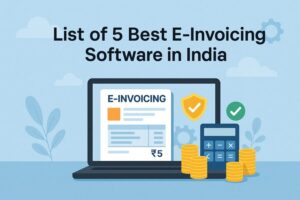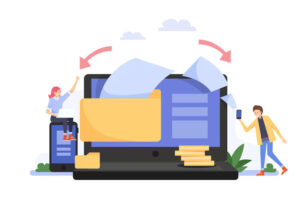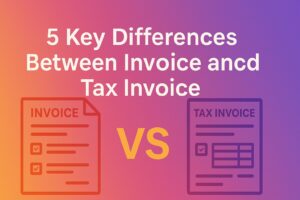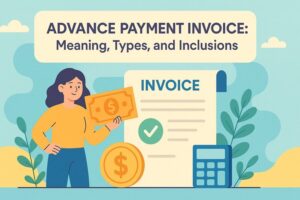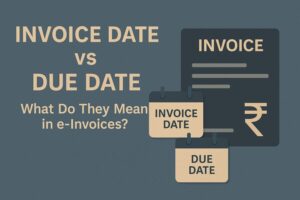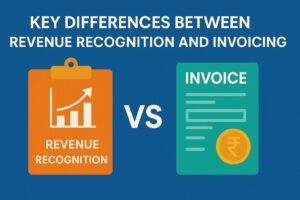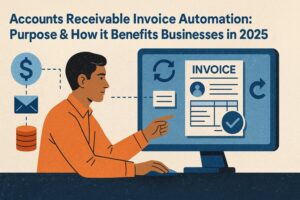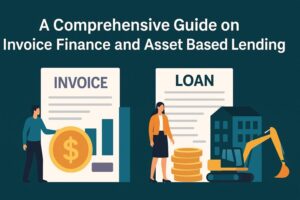Primary Differences Between E-Way Bill and E-Invoice
- 24 Nov 25
- 7 mins
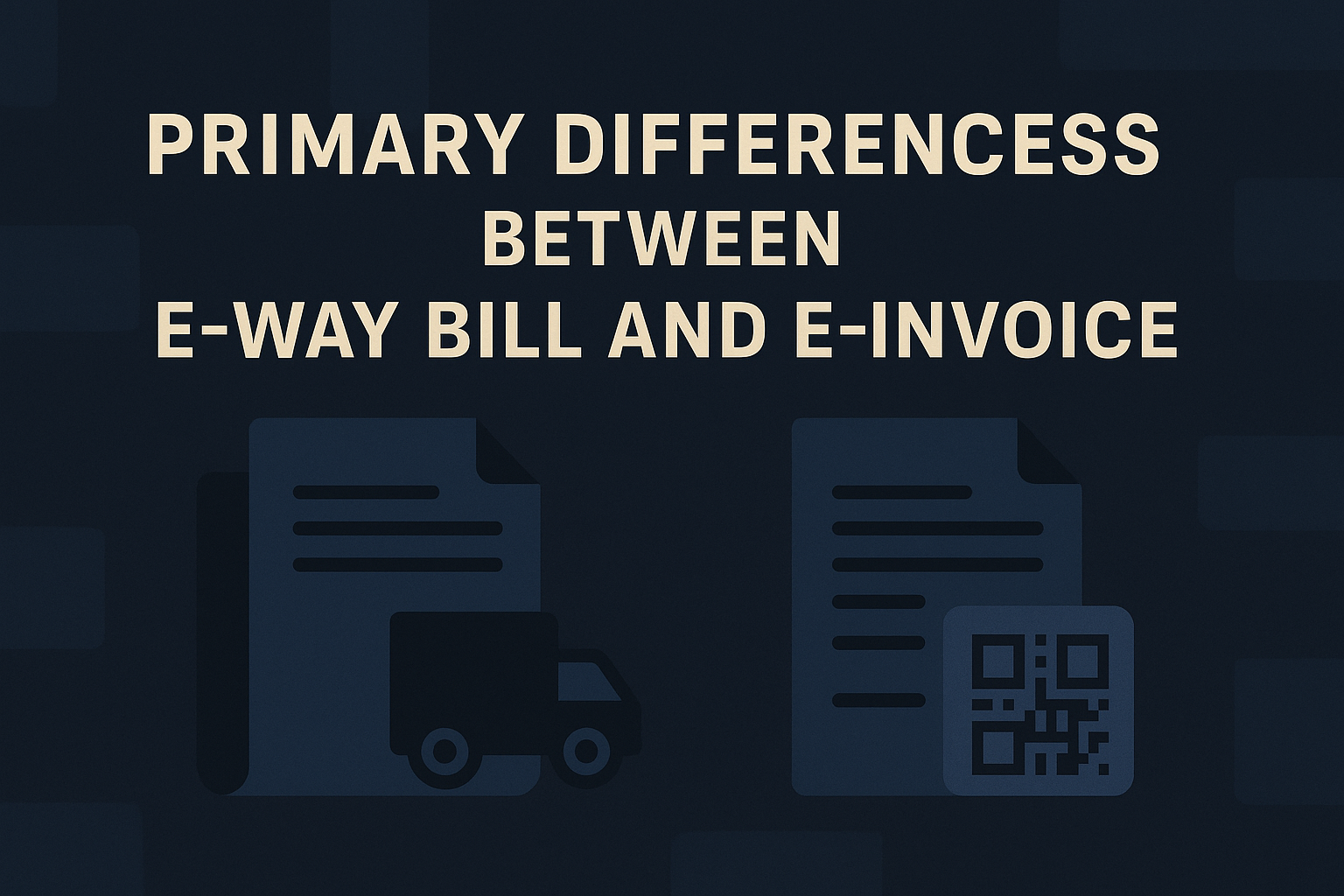
Primary Differences Between E-Way Bill and E-Invoice
Key Takeaways
- The difference between e way bill and invoice starts with purpose. E-way bills track goods movement, while e-invoices validate B2B transactions.
- E-way bills must be created for transporting goods above ₹50,000, whereas e-invoices must be generated for eligible B2B, export, and SEZ transactions.
- The e-way bill is generated on a dedicated portal, while e-invoices are generated through accounting software integrated with IRP.
- Exempt, Nil-rated, and B2C transactions do not require e-invoices, reinforcing the functional difference between e way bill and invoice.
- Non-compliance penalties differ significantly, highlighting why businesses must understand the difference between e way bill and invoice for GST accuracy.
Imagine you are a logistics manager moving goods across state lines and need to update both the e-way bill and e-invoice. It is easy to confuse the two, but they serve distinct purposes in GST compliance. While both documents ensure transparency, they differ in their purpose and other parameters for GST compliance.
For instance, e-way bills are created for the transportation of goods, whereas e-invoice is created for B2B transactions.
Let us dive deep into the primary differences between e-way bill and e-invoice in this article and know them in detail.
5 Key Differences Between E-Way Bill and E-Invoice
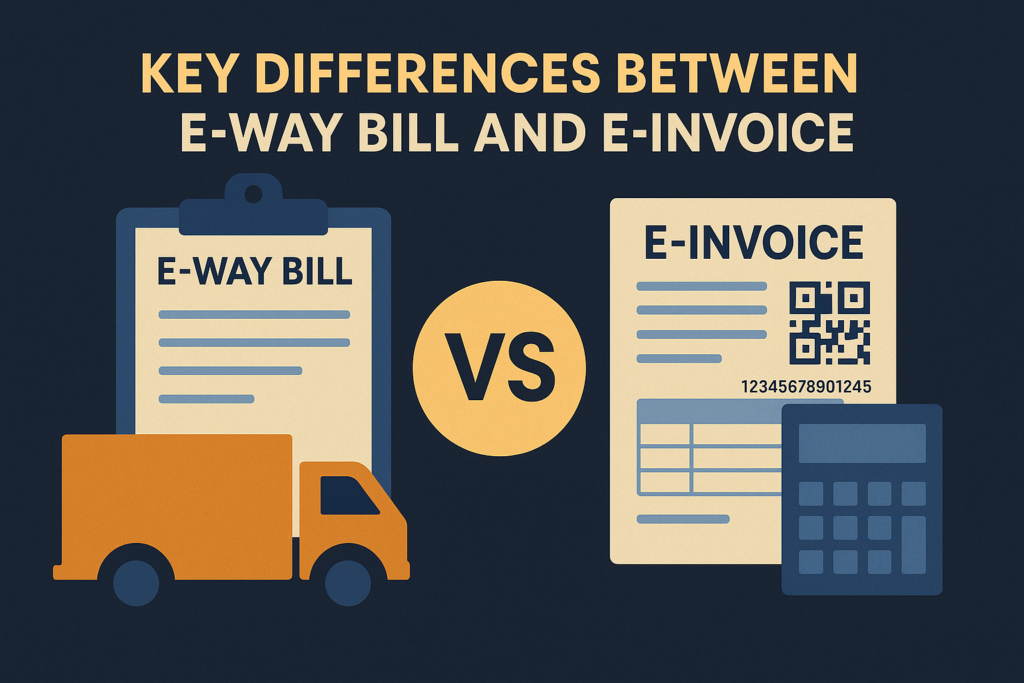
| Factor | E-Way Bill | E-Invoice |
| Purpose | E-way bill is created when goods need to be transported by air, road, train, ship, etc. | In e-invoices, an IRN number and QR code are added that are printed on regular invoices, credit notes, or debit notes. |
| Making Process | Yes, you need to create the e-way bill on the common portal. Some accounting software programs may help you generate the e-way bills automatically. | No, you only need to configure it once in your accounting software. After that, the system handles it automatically.There is no specific e-invoice portal; the entire process needs to be done through an accounting or billing software. |
| What Transactions Require Them? | In the transactions of goods that are above the value of ₹50,000, e-way bill generation is mandatory for the movement of these goods across state borders.While this threshold of ₹50,000 is usually the criterion for e-way bill generation, there are situations when this threshold is not applicable. | It is required in the tax invoices of:B2B salesDeemed export salesExport salesCredit and debit notesSEZ sales |
| Which Transactions Do Not Require Them? | E-way bill is not required when:Nil-rated, Non-GST, or Exempt salesGoods valued below ₹50,000Transport within the city | E-invoice is not required when:Debit and credit notes involved Exempt, Nil-rated, Non-GST and B2C sales involved |
| Penalty | The penalty for non-compliance with the generation of e-way bill is an amount equivalent to the tax evaded or ₹10,000, whichever is higher. In a recent ruling in 2024, there cannot be a penalty for a bona fide or inadvertent mistake in the e-way bill. | For each invoice which is not generated electronically, a penalty of ₹10,000 or 100% tax liability needs to be paid. Whichever of the two is higher is the penalty amount. |
Now that you are aware of the key differences between e-way bill and e-invoices, let us discuss the two in detail.
What is an E-Way Bill?
An e-way bill is a document, electronically generated, for the purpose of transporting goods from one point to another. It is used in transporting goods intra-state as well as inter-state.
The goods which are transported, as well as their destination, depend on the receiver and transporter.
Upon generation of an e-way bill, a unique 12-digit number is assigned to it by the system. This number is known as EBN and is present with the transporter, supplier, and recipient.
💡For your invoice and bill generation needs, use the PICE App.
5 Key Points to Remember About E-Way Bill
- There is a separate e-way bill portal and it is not the same as the common GST portal for registration, returns, and more.
- There are two parts of an e-way bill. The person initiating the movement of goods fills Part A, and the transporter fills Part B.
- Its validity for non-ODC goods will be for 1 day from the issue date for a distance of under 100 km. Beyond 100 km, the e-way bill’s validity is for one extra day for every 100 km or part thereof.
- Its validity for ODC or multimodal shipments by ship under 20 km if for one day. After 20 km, it remains valid for one additional day for every 20 km or part thereof.
- One can cancel the e-way bill online within 24 hours of its generation, unless it has been verified during transit.
Who Should Generate an e-Way Bill?

- If the transportation of goods is through a hired conveyance, then the receiver or the sender needs to carry out e-way bill generation.
- If one is not hiring conveyance for transportation, then it becomes the responsibility of the transporter to generate the e-way bill as a whole. To do this, they need to get the authorisation of the consignee/consigner first.
- Consignee/consigner can partially carry out e-way bill generation. In these cases, they need to only furnish Part A of the bill and leave the updation of Part B to the transporter.
- In case of interstate transportation, either the principal or the job worker can carry out e-way bill generation, irrespective of the consignment value.
What is an E-Invoice?
All of the GST-registered businesses need to generate an e-invoice for all of their B2B transactions.
A business that has an annual turnover of more than ₹5 crore needs to conduct mandatory e-invoicing. Furthermore, all businesses that have an AATO of more than ₹10 crore (previously this limit was ₹100 crore) need to upload e-invoices to the invoice registration portal (IRP) within 30 days.
Why are E-Invoices Required?
Before, when invoices were physical, a major issue was businesses issuing fake invoices to evade tax and commit fraud. With the e-invoice mandate, this issue has been controlled through direct government intervention. E-invoices help tax authorities with regular monitoring processes through the government portal.
What are the Primary Benefits of E-Invoicing?
- The GST filing of invoice details is needed only once.
- Invoice mismatch errors have become the talk of the past and have helped in data reconciliation under GST.
- Interoperability has increased due to the digital format of the invoices, which has reduced data entry errors.
- The use of a real-time tracker is possible for tracking invoices in real-time due to e-invoices.
Conclusion
E-way bills and e-invoices serve distinct purposes in GST compliance. While e-way bills track goods movement, e-invoices validate B2B and export transactions. Businesses need to understand these key differences between e-way bill and e-invoice to ensure their proper use, generation methods, exemptions and penalties. In this connected finance ecosystem, this will help them avoid legal trouble and ensure smooth operations under the GST framework.
 By
By 







